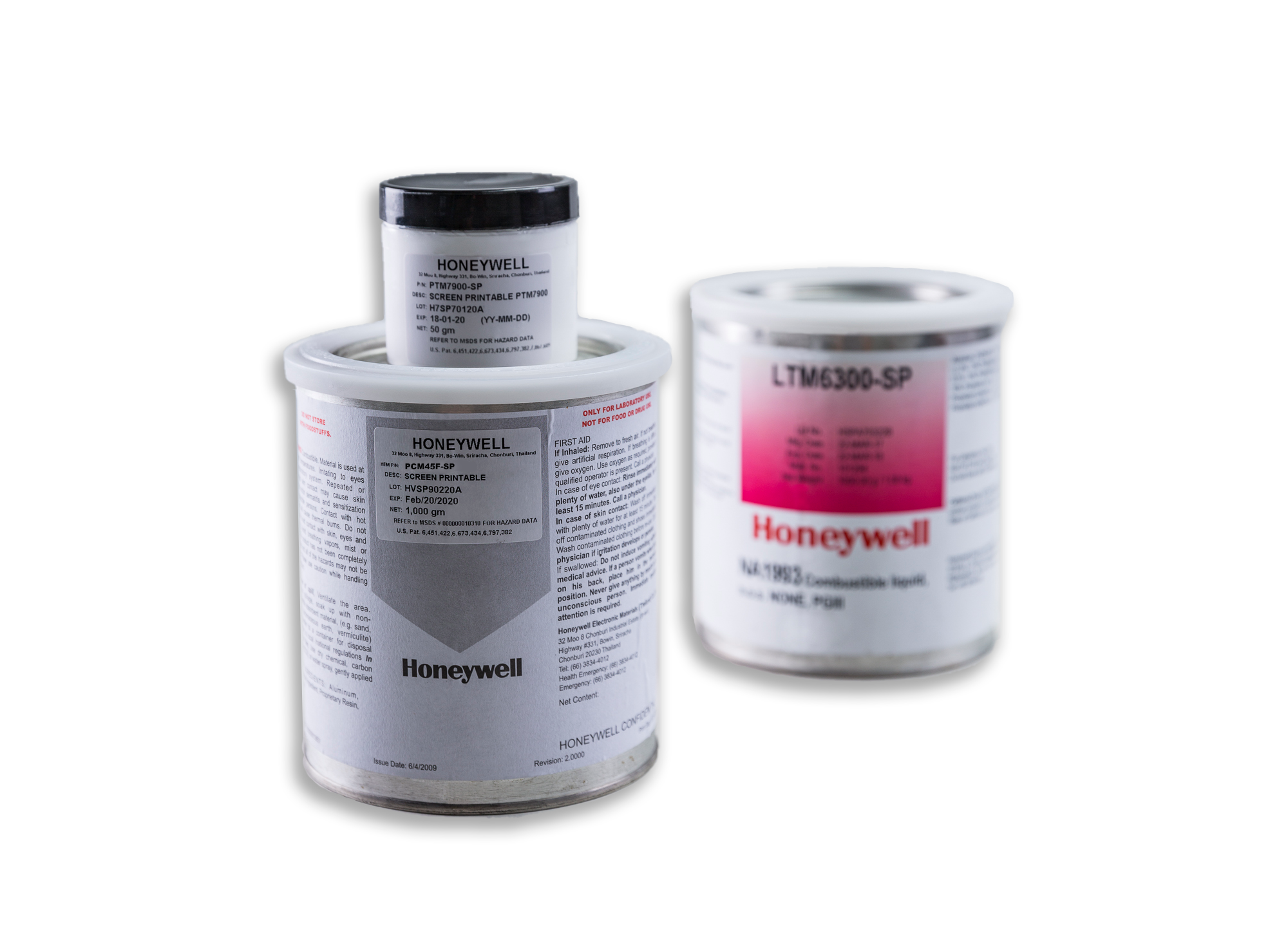PCM 45F-SP | Phase Change Paste
Harmonization Code : 8547.90.00.00 | Insulating fittings for electrical machines, appliances or equipment, being fittings wholly of insulating material apart from any minor components of metal (for example, threaded sockets) incorporated during moulding solely for purposes of assembly, other than insulators of heading 8546; electrical conduit tubing and joints therefor, of base metal
Main features
- 0.09 - 0.12 Thermal Impedance
- 2.0 - 2.5 Thermal Conductivity
- High volume resistivity
Product Description
PCM45F-SP is Honeywell's thermally conductive phase change paste, which is available in Stencil printable form. It is designed to minimize thermal resistance at interfaces and maintain extremely stable performance through reliability testing required for long product life applications. In addition to that it has excellent electrical properties and very high volume resistivity. After the PCM paste has been printed and dried, the material just behaves like a pad. All other installation is the same. The material is a solid below 45C, soft and gel like above this temperature. After the first phase change cycle, it does revert back and forth from solid to gel like around 45 to 50C. This property is critical for being compliant at higher temperatures and perform better than any grease under temperature and power cycling testing. Ions are not very mobile like grease, therefore it does not pump and dry out from under the chip.
PCM45F-SP has a Thermal conductivity of 2.0 - 2.5 (W/m·K) depending on the bondline thickness and is based on a robust polymer PCM structure that exhibits excellent wetting properties during typical operating temperature ranges, resulting in very low surface contact resistance. The proprietary material provides superior reliability and maintains low thermal impedance (0.09-0.12) , making it desirable for high-performance integrated circuit devices.
Technical Specifications
| General Properties | |
| Specific Gravity Specific Gravity Specific gravity (SG) is the ratio of the density of a substance to the density of a reference substance; equivalently, it is the ratio of the mass of a substance to the mass of a reference substance for the same given volume. For liquids, the reference substance is almost always water (1), while for gases, it is air (1.18) at room temperature. Specific gravity is unitless. | 2.2 |
| Thickness range | 0.20 - 1.00 mm |
| Electrical Properties | |
| Volume Resistivity Volume Resistivity Volume resistivity, also called volume resistance, bulk resistance or bulk resistivity is a thickness dependent measurement of the resistivity of a material perpendicular to the plane of the surface. | 8.2x1014 Ohms⋅cm |
| Thermal Properties | |
| Thermal Conductivity Thermal Conductivity Thermal conductivity describes the ability of a material to conduct heat. It is required by power packages in order to dissipate heat and maintain stable electrical performance. Thermal conductivity units are [W/(m K)] in the SI system and [Btu/(hr ft °F)] in the Imperial system. | 2.0 - 2.5 W/m.K |
| Thermal Impedance | 0.09 - 0.12 °C·cm²/W |
Additional Information
When choosing a printable paste it is important to understand the process parameters and limitations.
That's why we ask, when you contact us, to include the following information:
- What is your print thickness?
- How long is your printing time and working window?
- What is your drying step after printing?
- Temperature (Room temperature or something else?)
- Time
- Do you have any viscosity limitations in the printing process?
Is it mandatory to dry the paste after printing and before assembly ?
Paste formulations contain solvent which is essential for printing. These solvents must be dried off, if used immediately after printing, you may see gross voiding in the bond line. Most customers print, leave the boards to dry off for a day (24 hrs), then install. You can accelerate the drying by baking at higher temperature.




